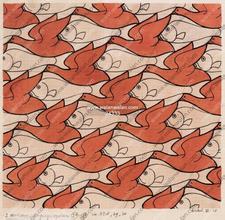| |
What is an ideal solution?

Perhaps it sounds odd to speak of an ideal solution. An ideal gas is understandable since gas molecules do not touch each other. However, in solution moleculers are always in contact and the goal of an ideal description that does not involve molecular interactions may seem difficult to achieve. Nonetheless, it is useful to imagine such a solution since that provides a reference point for further development of the real solution. The basic idea of all of the models is that solvents and solutes are in equilibrium with the vapor above the solution. This gives us a handle to use to measure the relative effect of mixing two components. The basic isdea of an ideal solution is that each component will behave as if the other one were not present. The vapor pressure of component 1 will simply be its pure vapor pressure times the fraction of molecules in component 1. THe same applies to component 2. The mathetmatical expression of this statement is known as Raoult's law. The vapor pressure phase diagram according Raoult's law is simple for the "liquid line". The vapor pressures are a linear comination of the two pure vapor pressures and therfore the boundary between the liquida and the two-phase region is a straight line. It is also true that Raoult's law correct predicts a two-phase region and a vapor curve that represents the other boundary of that region.
Two-component systems
Raoul's law was derived with a two-component system in mind. We can move beyond the limit of dilute solutes to consider the full range of solute mole fraction. As the solute mole fraction surpasses 0.5, the solute becomes the solvent and the vice versa. There is a mutual interaction between solvent and solute that can be utilized to relate any deviation from ideality in one to the other. This is considered in the next section, but the derivation of non-ideality builds explicitly on the model for an ideal solution.
Deviations from ideality
If a solute is surrounded by solvent molecules that are quite different from that molecule then the properties of the solute will be quite different from what they would be in the pure liquid. We must introduce a new theory of non-ideal solutions to explain this difference. The equation that represents the vapor pressure in this case is known as Henry's law. It shows a strong deviation from Raoult's law for dilute solutions
| |
|
|
|